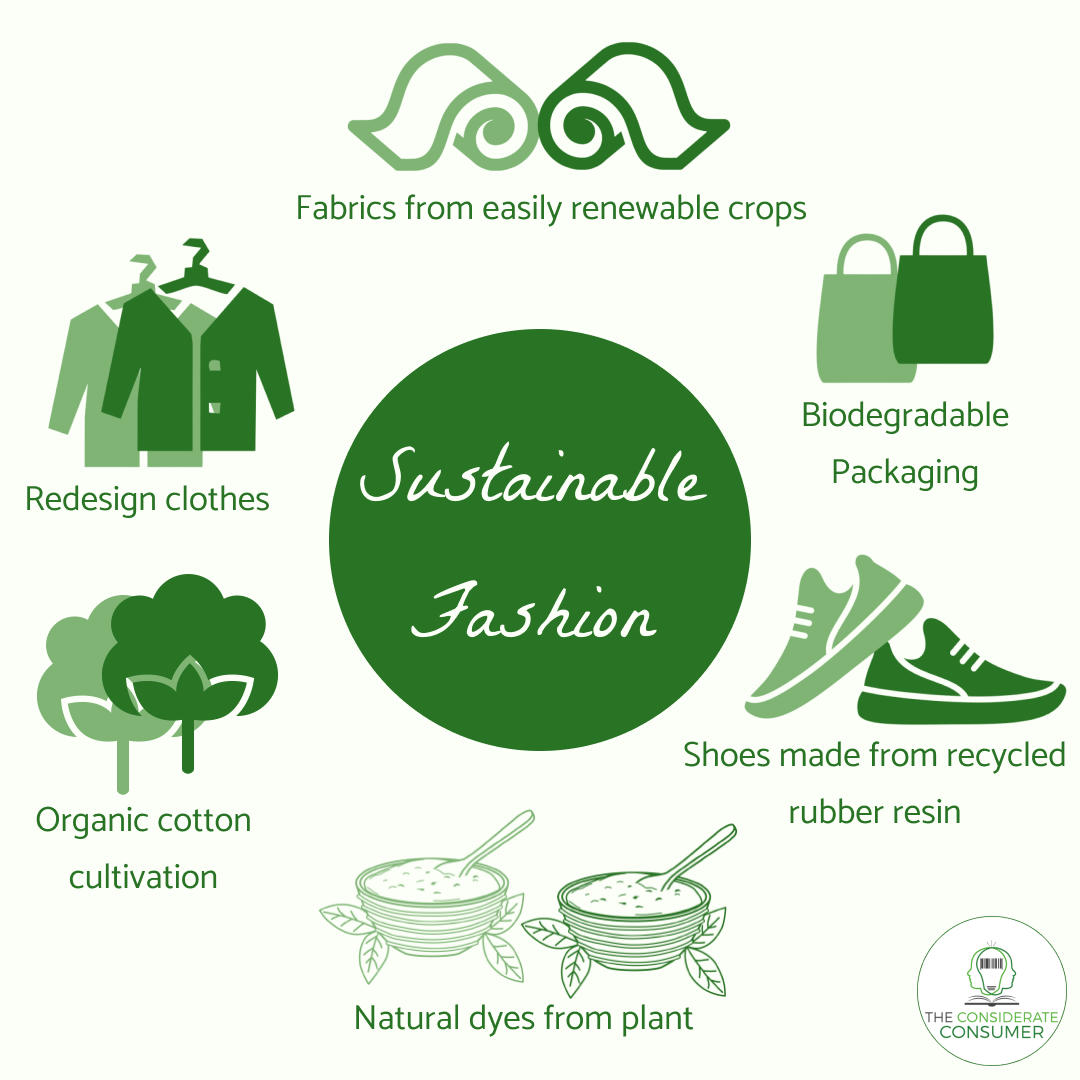Keep Ahead of the Curve by Discovering Innovative Style Patterns
In an industry as vibrant as fashion, remaining ahead entails greater than just adhering to existing trends-- it requires an exploration of advancement. Smart textiles, as an example, are changing garments into practical masterpieces, while 3D printing is changing style processes with its adjustable, waste-reducing capacities. As sustainability ends up being a cornerstone, innovations like environmentally friendly products and round fashion methods are improving environmental obligation - Cape Town Sustainable Fashion. Moreover, the convergence of innovation and style declares a new age of consumer involvement. How, then, can these arising fads redefine the future of fashion, and what implications do they hold for brands seeking to flourish in this progressing landscape?

Embracing Smart Textiles
In recent times, the fashion sector has actually seen a transformative shift with the integration of clever fabrics, a sophisticated innovation that mixes technology with material. This evolution stands for not just a combination of visual appeals and functionality however additionally a substantial jump in the direction of sustainability and customization in fashion. Smart fabrics, additionally known as e-textiles, embed sophisticated electronics such as sensors and conductive strings within the textile, making it possible for garments to connect with the environment or the user.
These textiles are designed to keep track of physiological parameters, such as heart price or body temperature level, offering real-time health and wellness analytics. Beyond wellness applications, smart textiles are also being utilized for adaptive garments, which can alter color or pattern in action to ecological stimuli, therefore providing a vibrant style experience.
Furthermore, the advancement of energy-harvesting textiles that produce power from activity or sunlight is leading the method for self-dependent wearable technology. This technology is attracting eco aware customers and developers intending to lower the eco-friendly footprint of style. As study and growth in this field development, smart textiles are expected to come to be significantly common, improving the landscape of modern-day style with their multifunctional abilities.
The Rise of 3D Printing
Reinventing the manufacturing landscape, 3D printing has emerged as a game-changer in the garment industry. This sophisticated innovation has made it possible for designers to push the limits of imagination, generating detailed and tailored garments that were previously inconceivable. By leveraging electronic layout and additive manufacturing, 3D printing facilitates the development of complex geometries and patterns, allowing developers to explore brand-new textures and structures.
A noteworthy benefit of 3D printing in vogue is its capacity to produce on-demand, decreasing waste and decreasing stock requirements. This performance not just maximizes production processes however likewise permits rapid prototyping, allowing developers to bring their visions to life in a much shorter timeframe. In addition, 3D printing supports personalization to a level unrivaled by conventional approaches, offering individualized fits and one-of-a-kind layouts customized to private consumer choices.
The increase of 3D printing has additionally equalized style, making it easily accessible to arising developers that can now make top quality pieces without substantial financial investment in conventional manufacturing framework. As modern technology proceeds to advancement, the fashion business is positioned to harness the full potential of 3D printing, checking out new materials and techniques that will definitely redefine how fashion is conceived and generated.
Lasting Fashion Technologies
As the fashion business faces the pressing need for ecological responsibility, lasting fashion developments have actually emerged at the forefront of transformative modification. The expanding awareness of ecological impact has actually fueled a change in the direction of even more eco-conscious methods and products. Brand names and developers are currently prioritizing sustainability, integrating methods that reduce waste and lower carbon footprints.
One substantial development is the rise of round fashion, which stresses recycling and upcycling to extend the lifecycle of garments. This strategy not only minimizes waste yet likewise encourages consumers to take on an extra mindful approach to clothes usage.
Another advancement depends on the fostering of cutting-edge dyeing methods that use waterless processes or natural dyes, therefore decreasing the vast amounts of water and chemicals typically made use of in fabric dyeing. In addition, developments in biotechnology have actually resulted in the production of lab-grown natural leather and textiles, supplying cruelty-free and ecologically pleasant options to traditional products. Through these introducing efforts, the apparel industry is making significant strides in the direction of a more sustainable future.

Tech-Integrated Apparel
Tech-integrated garments represents a revolutionary blend of style and technology, reshaping exactly how individuals interact with their garments. This innovative domain name is noted by the inclusion of wise textiles and embedded digital elements, improving both functionality and visual appeal. From health and fitness trackers installed in sportswear to heated coats regulated using smart device applications, tech-integrated garments supplies customers extraordinary comfort and flexibility.
Introducing brands are driving this trend, focusing on producing garments that react to ecological stimuli or individual commands. For instance, some garments can change shade or pattern in response to temperature level shifts, while others incorporate biometric sensors to keep track of wellness metrics like heart rate or tension degrees. The seamless combination of technology into textiles additionally includes environmental sustainability, with initiatives to create self-cleaning materials or garments that get used to weather, hence decreasing the need for multiple layers.
Additionally, the advent of wearable innovation is not just restricted to garments however extends to accessories like watches and eyewear, additional expanding the scope of tech-integrated fashion. As the market continues to innovate, the possibility for personalization and customization in clothing expands, offering consumers distinct, tech-enhanced fashion experiences that accommodate their specific needs and choices.
Future of Virtual Fashion
In recent times, the future of Look At This virtual fashion has become a transformative pressure within the sector, leveraging innovations in electronic technology to redefine how fashion is developed, experienced, and consumed. By integrating enhanced reality (AR), click here to find out more digital fact (VIRTUAL REALITY), and 3D style tools, designers can now craft immersive and interactive experiences that transcend typical fashion borders. Online fashion enables the production of garments that exist solely in digital settings, offering endless possibilities for advancement without the limitations of physical production.
This digital change not only provides chances for innovative expression however also addresses sustainability worries intrinsic in typical style techniques. Cape Town Sustainable Fashion. By removing the need for physical resources, virtual fashion decreases waste and lessens carbon impacts. In addition, the surge of virtual style aligns with the increasing consumer need for one-of-a-kind and individualized experiences, as digital garments can be personalized and tailored to private choices effortlessly

Conclusion
The fashion market's future lies in the assimilation of sustainable techniques and cutting-edge innovations. Online fashion is positioned advice to redefine consumer interactions.
In current years, the fashion sector has actually seen a transformative shift with the integration of smart fabrics, an advanced development that mixes innovation with textile.As the fashion sector grapples with the pressing requirement for ecological responsibility, lasting style advancements have actually emerged at the center of transformative modification.In recent years, the future of online style has emerged as a transformative pressure within the market, leveraging developments in electronic modern technology to redefine how fashion is developed, experienced, and eaten. The surge of virtual fashion aligns with the boosting customer need for one-of-a-kind and individualized experiences, as digital garments can be personalized and customized to private preferences with ease.
The fashion market's future lies in the combination of ingenious innovations and lasting practices.